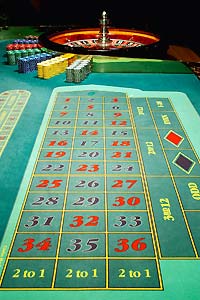Roulette Double Dozen Strategy
Double Street Quad Roulette Strategy. Now that we have covered what the inside bets are in roulette, it is time to investigate one of our favorite strategies - the double street quad roulette strategy. The name might be hectic but using the strategy is very simple once you get its hang. Plus, this will have you covering 17 numbers across the board. In fact, in its classic version, this method covers a little over 70% of the wheel – or 68% in a double-zero roulette. The most elegant part of this strategy is that it can help players generate decent winnings over time without having to risk too much. Overall, this system is considered to be very safe, flexible, and reliable.
- Roulette Double Dozen Strategy Meaning
- Roulette Double Dozen Strategy Template
- Roulette Strategy Systems
- Roulette Double Dozen Strategy Definition
Before you we get into the Dozens and Columns system, you’ll first need to understand the two main components of the roulette table.
There are three ‘dozens’ on the board, each containing twelve numbers. These are as follows:
- First Dozen: 1-12
- Second Dozen: 13-24
- Third Dozen: 25-36
These go across the board, and are easy to remember. The columns, on the other hand, aren’t as easy to commit to memory. The way to remember columns is that they go down the board. The numbers in each of the columns are as follows:
- First Column: 1, 4, 7, 10, 13, 16, 19, 22, 25, 28, 31, 34.
- Second Column: 2, 5, 8, 11, 14, 17, 20, 23, 26, 29, 32, 35.
- Third Column: 3, 6, 9, 12, 15, 18, 21, 24, 27, 30, 33, 36.
The 0 (and 00 slot) isn’t included in any of the dozens or columns, which means that each cover just less than a third of the wheel. You also receive 2 to 1 returns from dozen or column bets, which is much less than most inside bets, but slightly more than most outside bets.
Video Tutorial
View this tutorial video for using the Dozens & Columns system, or read below for an in-depth guide for implementing the strategy. All of our roulette tutorials are available on Youtube, so make sure you subscribe to our channel.
How the Dozens And Columns System Works
Just a quick word of advice. This is a system designed for more experienced roulette players, if you’re a newcomer than you might want to give some other systems a try before moving on to this one.
Unlike most roulette systems, the Dozens and Columns strategy gives you a bit more leg room by allowing you observe the table before playing. This means you’ll have to actively think before you place a bet, obtaining a strategic edge that will help boost your bankroll.

Here’s how the system works:
Roulette Double Dozen Strategy Meaning


- Decide what 1 unit will be. This can be any amount you want, but I’d advise you keep it low as you’ll only be betting more.
- Watch the wheel for a while. When you think a particular dozen or column will appear place 1 unit on it.
- If you win, return to just one unit.
- If you lose, double your bet.
This system requires a bit more thought from the player than other strategies; however it also allows a player to triple their wager if they get it right. This is a negative progressive strategy as you’ll be betting more when you’re losing.
Take a look at this example:
- Place 1 unit and lose (-1).
- Place 2 units and lose (-3).
- Place 4 units and lose (-7).
- Place 8 units and win (+9)
Regardless of how much you lose, just one win at the end of the streak will see you back into positives. This can go on indefinitely as long as you have the bankroll to back up your play. It would also take an extremely unlucky losing streak for you to not come up with a win (but this can happen, so watch out).
Pros
- You stand to win large sums of money, even after a losing streak. The longer the losing streak, the bigger the win.
- Gives the player more control over their bet.
- As long as you’re sensible about your units, you can really improve your chances of a profit.
Roulette Double Dozen Strategy Template
Cons
Roulette Strategy Systems
- If the losing streak holds out for longer than your bankroll then you might see no wins whatsoever.
- Slightly harder to understand than most other strategies.